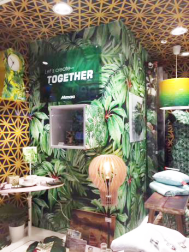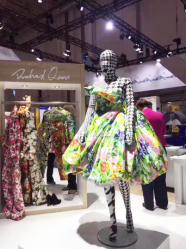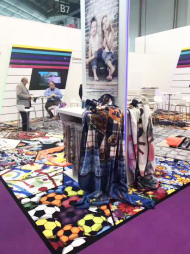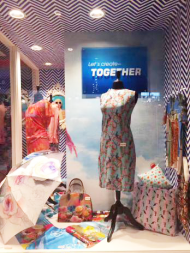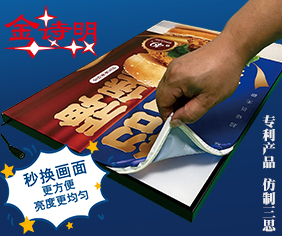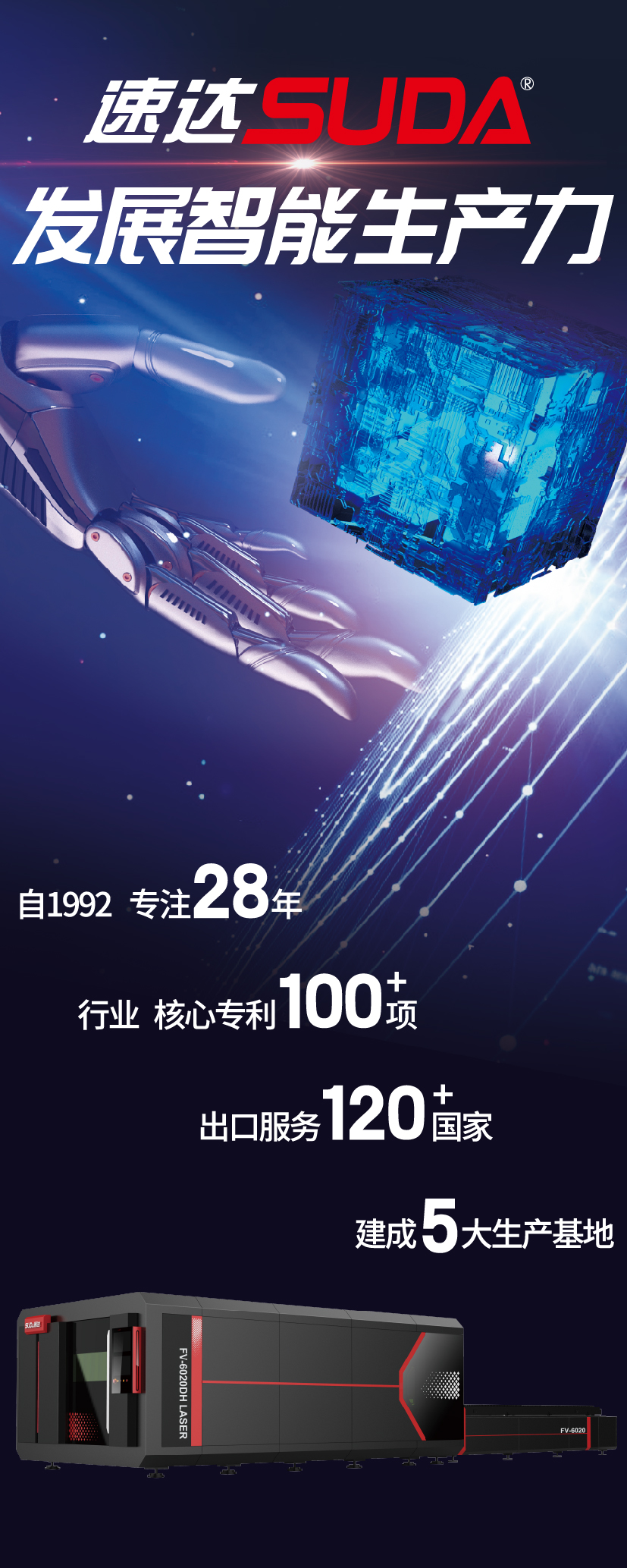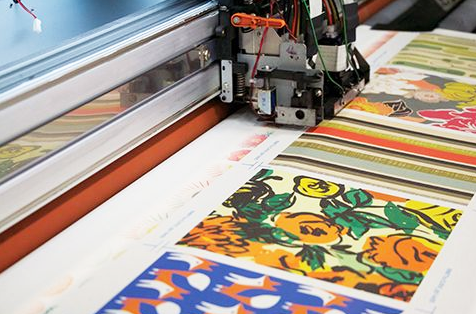
Digital textile printing can be thought of as a system, combining printer technology, ink chemistry, fabric preparation, colour fixation and supportive software for colour management, to process interior décor applications and other wide-format specialty graphics. The American Association of Textile Chemists and Colorists (AATCC), for its part, has provided specialized insight into ink chemistry options for digital wide-format printing.
织物打印被认为是一种墨水与织物完美结合的打印技术,也是一种处理内部装饰应用和其他宽幅专业图形的色彩管理软件。近来,美国纺织化学家和染色师协会就数字宽幅打印的油墨选择提供了专门的配置方案。
Ink chemistry relates to both dyes and pigments. Dyes are more luminous and colourfast, entering the interior of the textile fibres and achieving a chemical bond with them or becoming trapped within them. They entail more complex processing requirements than pigments.
油墨涉及染料和颜料,染料,它能使打印出来的图案的光亮度更为优越,其原理是当它进入纺织纤维的内部后,形成化学键被融合在其中,与颜料相比,它的加工要求更为复杂。
Also, the type of dye must be matched with the type of fibre. Acid dyes can be printed to nylon, silk, wool and Spandex. Reactive dyes are also compatible with silk, as well as cotton, linen, rayon and viscose. Disperse dyes can be printed to polyester and perhaps some nylon fabrics.
此外,染料的类型必须与织物的类型相匹配。酸性染料可以打印到尼龙、丝绸、羊毛和氨纶这些材料上。活性染料能与丝绸、棉、亚麻、人造丝和粘胶相兼容。分散染料可以打印到聚酯和一些尼龙织物上。
Acid and reactive dyes
酸性染料和活性染料
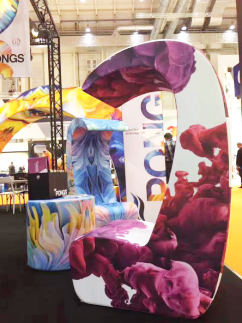
With well-developed chemistry for printing textiles, reactive and acid dyes are water-soluble, offer good jetting properties and support a broad gamut, with availability in up to eight colours.
用于打印在织物上的酸性染料具有水溶性,能提供良好的喷射性能,并支持广泛的色域,可用性达8种颜色。
Processing is complex. Pre-treatment involves scouring and bleaching the fabric and applying a coating that includes a thickener (similar to a ‘print paste’), along with an acid (for acid dye printing) or alkali (for reactive dye printing), as well as auxiliaries to promote level dyeing. These processes enhance print precision and colour bonding. Then, after printing, steaming is necessary to promote movement of the dyes into the fibres and enable chemical bonding. Finally, washing removes excess dyes and auxiliaries and improves colourfastness.
预处理包括洗涤和漂白织物,并施加包含增稠剂的涂层以及酸碱剂来促进染色,这些过程能增强打印的精度和色彩的粘合。在打印完之后,蒸汽帮助染料进入织物中,形成化学键。 最后,洗涤可以除去多余的染料和助剂,并改善色牢度。
The results are vibrant and the dyes establish a strong chemical bond with the material, yielding excellent washability.
由此我们知道,染料与材料能形成强烈的化学键,产生优异的可洗性。
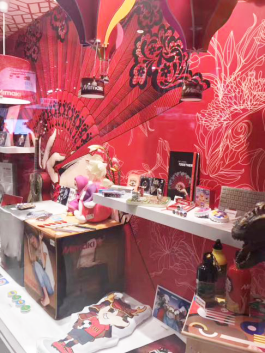
Disperse dyes
分散染料
Also a well-developed ink chemistry with good jetting properties, disperse dyes are insoluble particles. They are typically available in four-colour sets, with cyan, magenta, yellow and key/black (CMYK), and have been formulated for both transfer-based (i.e. dye sublimation) and direct printing.
还有一种效果非常好的油墨——分散染料,具有良好的喷射性能,它通常可以作为四色组合(青色、品红色、黄色和黑色)使用,一般用于转印(即染色升华)或直接打印。
Disperse dyes for transfer-based sublimation offer relatively easy, low-energy processing, as the inks are simply printed onto paper. A calender roll or heat press initiates sublimation at approximately 204 C (400 F). In a gaseous form, the dye moves into the fibres, where it is trapped as it cools to a solid state.
由于只是将油墨简单地打印在纸上,因此,用于转印升华的分散染料产生的能量较低,压延辊或热压机在大约204℃(400°F)下就可以升华,以气态形式,将染料融合到织物中,然后当它冷却至固态时就被完全吸收了。
Direct application of disperse dyes varies. Low- to medium-energy dyes can be used in combination with heat to initiate sublimation. High-energy dyes are processed with high-temperature steam, which drives the dyes into the fibre for superior lightfastness. In any case, processing is more complex for the transfer method, with pre-treatment required and post-print washing also necessary for some applications.
分散染料的应用是有所不同的。低能染料可遇热进行升华处理,而高能染料利用高温蒸汽进行加工,将染料嵌入织物中,具有出色的耐光性。在任何情况下,对于转印的处理是较为复杂的,需要先进行预处理,并且对于材料也需要洗涤。
Transfer-based disperse dye printing is a growing trend, representing 50 per cent of the digital textile market, according to a 2013 study by Provost Ink Jet Consulting. There have been advances in formulations for industrial printheads, improved colour yields—i.e. more colour from less ink—and lighter and uncoated transfer papers.
根据Provost喷墨公司在2013年的一项研究表面,分散染料应用的增长趋势非常明显,占数字纺织品市场的50%。此外,工业打印头的技术也取得进步,产量得到了很大的提高。
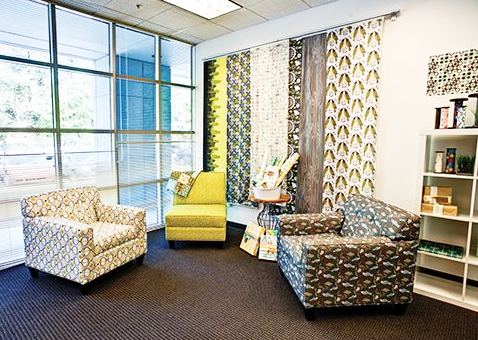
Pigments
颜料
Compared to dyes, pigments for textile printing are still in the midst of development and remain challenging to formulate and maintain. Their insoluble particles offer a smaller colour gamut and they may require both fabric pre-treatment and post-print curing with dry heat, but they offer a lower cost of entry.
与染料相比,应用于织物的颜料仍处于新的发展阶段,由于它们的不溶性颗粒只能提供较小的色域,并且需要两种织物进行预处理,再进行热固化,对这种颜料的配置仍然需要进一步改善。虽然相对其他材料的预处理步骤会多一些,但它们的成本却是较低的。
Pigment-based inks bond to the surface of the fabric, rather than entering it. The results are less vibrant and less colourfast.
如果颜料只是粘合到织物的表面,而不是真正融入到织物中,那最后图案的效果不会显得生动有活力。
The development of pigment-based inks for textiles has been driven by the direct-to-garment market, which has been dominated by CMYK+white ink sets and Epson printheads. Today, however, there is an increasing focus on roll-to-roll (RTR) printing with industrial printheads (e.g. Kyocera and Ricoh) using eight-colour sets. The industry’s development goals include improved colourfastness and vibrancy. Processing, meanwhile, has also become easier by integrating pre-treatment, printing and fixation into the same production equipment lines (e.g. Kornit’s Allegro system).
用于织物的油墨CMYK是由爱普生公司在服装市场上推出的,随着八色组的工业打印头(例如京瓷和理光)进行卷对卷打印的项目越来越多,行业开始越来越重视色彩的活力。同时,通过预处理,打印和固定整合到相同的生产设备线(例如Kornit的Allegro系统)中,加工制作也变得更加容易了。
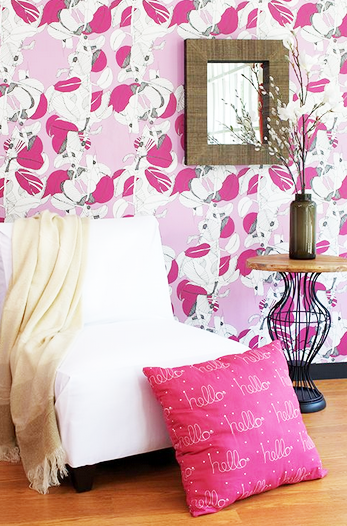
Soft signage
软标牌
In the sign industry, the printing of textiles has been dominated by dye sublimation, but there has also been an exploration of pigment-based inks, most notably through the development of durable aqueous ‘latex’ inks for HP and Mimaki wide-format printers.
在标识行业中,织物打印一直以染料升华为主,但同时也对油墨进行了新的尝试,尤其是针对HP和Mimaki宽幅打印机的水性乳胶型油墨。
Many signmakers may not be well-aware of the nuances of ink chemistry with relation to textile printing. In part, this is because they have not needed to become familiar with textile applications beyond soft signage.
许多标识制作商或许不能很好的意识到,油墨与织物打印配合的微妙之处。这也是由于在一定程度上,除了软标牌以外,他们较少接触织物打印。
This is changing today, however, as they learn about new opportunities for wide-format digital printing, particularly the production of interior décor for retail stores and other commercial environments. There is some logic to offering both soft signage and interior décor, as many of the considerations are similar and both tend to use polyester-based fabrics. As such, much of signmakers’ existing knowledge can be carried over into the décor market.
然而,随着标识制造商接触数字宽幅打印的机会增加,特别是应用于一些零售商店和其他商业环境的软标牌和室内装饰业务的增加,他们有越来越多机会使用织物打印技术。因此,许多标识制造商将现有的知识转移到了装饰市场,拓展了很多新的业务。
Given the diversity of ink chemistries currently available, however, it is still important for sign shops to do their own testing for specific performance features. The commercial interior décor market is very broad and the main questions for a given job are how long it will need to last and what are its colourfastness and fire resistance requirements. Promotional graphics may be temporary, while environmental graphic design (EGD) features may be permanent.
然而,在目前市场上,可用的油墨具有多样性选择,标识商店对于选定油墨的性能以及适用范围需要进行事先测试。而应用在商业室内装饰市场的油墨,需要考虑的问题主要是它的持续性、耐光性和耐火性。促销图形使用的油墨可以是短暂性,而设计环境图形使用的油墨应该是永久性的。
With this in mind, sign shops can select between pigment-based direct printing and dye sublimation, depending on their graphics’ specific short- or long-term requirements.
考虑到这一点,标识制造商可以基于图形短期或长期的要求,进行油墨的选择。
